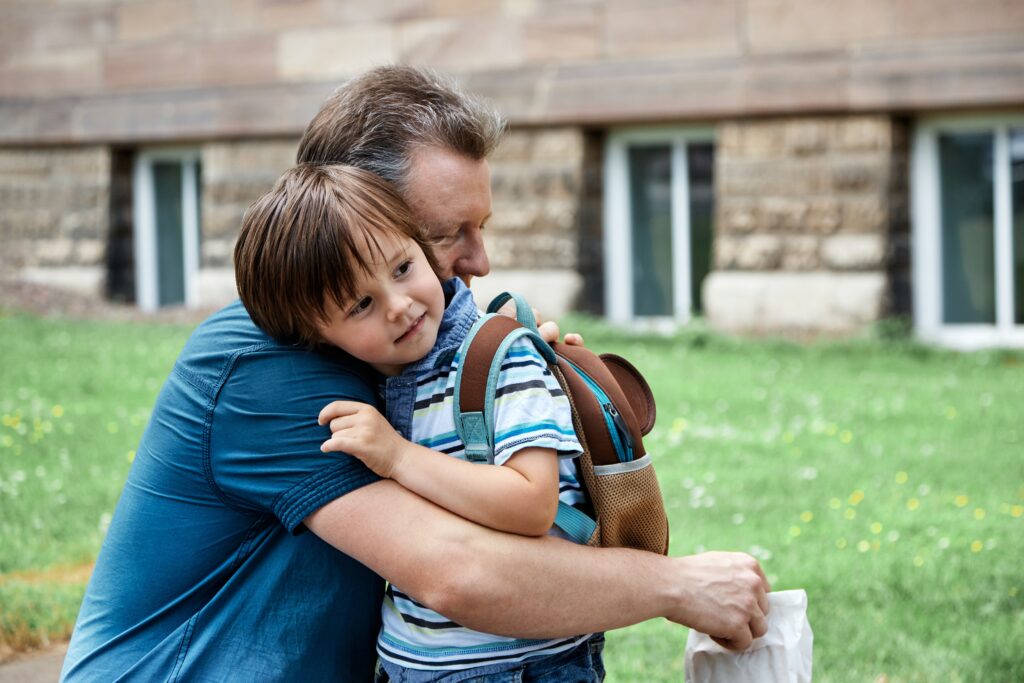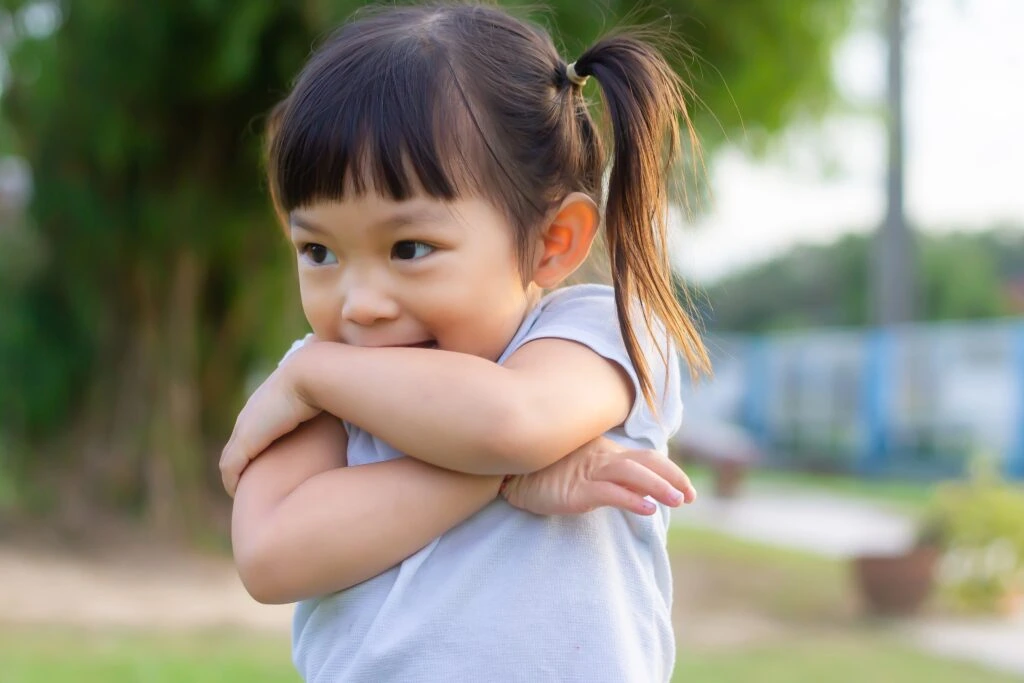Selective Mutism Meaning
Some children may be unable to speak around their peers or in other social settings, which may mean that they’ve developed an anxiety disorder known as selective mutism. It is common for children with selective mutism to be chatty at home but silent at school, which is why teachers are the first to start noticing signs in children, usually aged three or four. It also can remain undiagnosed until later in school when some signs become more prominent.
Selective mutism is known to co-occur with other conditions like social anxiety disorder. There are many children that have been diagnosed with selective mutism as they remain talkative and have the ability to make conversations and discussions among familiar faces like friends and family. However, they are known to remain silent at school and don’t share their knowledge and opinions. Contrary to misconceptions, the children diagnosed with SM, don’t refuse to speak but due to the effects of the condition, they lose their ability to speak freely only temporary. Also, they are unable to express themselves due to an immense anxiety build up that can get overwhelming.
Children with the symptoms of selective mutism are still able to overcome their challenges with help from a mental health professional. By utilising individually designed care plans and person-centred support, as well as embracing and understanding the challenges of SM, children with this condition can gain social skills and perform well in school.
Situational Mutism
Selective mutism is also known as situational mutism, an anxiety disorder which usually presents itself during early childhood. Children with SM speak fluently in comfortable situations, but in uncomfortable social situations, they remain silent. Some people may have a blank facial expression or seem “frozen” when expected to share their opinions.
Situational mutism often occurs when children find themselves in less familiar environments and events, and contrary to popular belief, it is not bad behaviour or shyness. SM is a type of social anxiety disorder or fear of being judged by others. Children avoid talking because they are afraid of the response they would get from their environment, and if left untreated, some children lose their ability to develop friendships and essentially avoid speaking overall.

Early identification is vital for children with selective mutism and finding the proper tools and methods to help them gain social skills and overcome their challenges. Our in-house speech and language therapists, along with PBS practitioners at Unique Community Services, provide these services and transform the lives of children.
When Selective Mutism Usually Becomes Noticeable?
Selective mutism can start at any age, but it most often begins in early childhood between the ages of 2 and 4. It’s often noticed when children start interacting with people outside their family, like when starting nursery or school.
A child with selective mutism doesn’t refuse to speak. Instead, they are unable to speak. The expectation to talk in front of other people may trigger a freeze response and cause feelings of panic and anxiety, making talking impossible. In time, the person may learn to anticipate all the situations that provoked the stressful reaction and find ways to cope or avoid these triggers.
Selective mutism affects about 1 in 140 children, and it is more common in girls or children who migrated from their country of birth. The most significant sign of selective mutism is the contrast in children’s ability to engage with different people, often characterised by a “frozen” facial expression and fearful look when expected to talk to someone outside their inner and close circle.
Early Recognition can Lead to More Effective Intervention
Children with selective mutism need support, empathy and compassionate accommodation within their community. Peers, other children and adults need to learn more about the effects of SM and adapt their everyday expectations.
A child with selective mutism can improve communication skills through positive reinforcement, praise and patience. By gradually improving children’s self-esteem, children can overcome their challenges and anxiety and lead an active, fulfilling life. It is essential to remain patient and find positive and proactive approaches to stimulate speech. It is vital to stay closely involved with the child’s development and therapy for the best outcome. You may also find new ways to structure situations outside the home that can improve children’s communication.
Common Signs and Behaviours
The early and most common signs of selective mutism usually occur between the ages of two and four. The signs become prominent when they interfere with the child’s life, like engaging with peers outside their immediate family and friends. Without early intervention, selective mutism can be prolonged throughout adolescence and adulthood.
Selective mutism in children can affect their ability to build relationships with other people and also affect their performance in school. Some of the most common signs of SM include:
- Avoiding eye contact
- Body stiffness and tension
- Social withdrawal
- Fear of judgement
- Using gestures instead of speech
- Poor coordination
Over 90% of children with selective mutism have enhanced social anxiety and feel uncomfortable being introduced to other people, being criticised or being the centre of attention. Most children also have difficulty developing social skills and face developmental challenges. Furthermore, some children even feel nausea, stomach ache and shortness of breath when faced with speaking in front of other people aside from their families.
Also, children with selective mutism may have an ‘expressionless appearance’ when they are feeling anxious. This is especially present in those who move to other countries and cities and face the challenge of meeting new people. Additionally, selective mutism is also related to other challenges that affect communication skills like autism spectrum disorder, attention deficit hyperactivity disorder (ADHD) and sensory processing disorders.
Differentiating Selective Mutism from Shyness
Child shyness is a feeling of discomfort caused by other people, usually strangers, when they try to talk and ask questions to the child. It is often challenging to differentiate shyness from selective mutism because children with SM show similar signs and behaviours to a shy child. However, these are two very different things.
Shy children eventually warm up to new events, situations and activities, whereas children with selective mutism do not. For example, it may take a few weeks for a shy child to adjust and start talking and building relationships in school, while it may take much longer for a child with selective mutism because it is extreme social anxiety and a mental health challenge. Also, selective mutism is still under-researched, and it often gets mistaken as a learning disability or a speech and language disorder.
Emotional and Social Impact
Selective mutism can be challenging for young children, especially when starting school. School tasks usually require verbal communication like actively participating in class, presenting, singing in a music class or working in groups. Children’s primary opportunity to make friends in a school setting while being unable to communicate can be challenging.
The signs of selective mutism may become evident once children start progressing in school. SM can have a profound emotional and social impact and cause isolation and loneliness. It is essential to detect the signs early so children can get the proper support and avoid the negative emotional and social impact.


Consulting with paediatricians, clinicians, teachers, and speech-language therapists is vital in finding the best proactive method to help mitigate the negative effects of SM. Through proper support and care, acceptance and inclusion, children can feel like valuable community members and find the school environment a safe space to share their opinions and raise their voices.
The Role of Anxiety
Anxiety in children can manifest in different ways, and it’s important to recognise that not all children exhibit the same symptoms. For some, it may cause an inability to speak or communicate, while others can talk to close friends and family, but struggle to communicate with anyone else. Children with SM will have different difficulties in responding or communicating with their peers, which is why social engagement is usually affected.
The feelings of anxiety may cause children to stay fearful of social interaction and become socially isolated. The role of anxiety in selective mutism is substantial, which is why society needs to understand this mental health condition better and provide a compassionate environment for children, helping them socialise and effectively communicate while being understanding and accepting.
Can You Have Selective Mutism as an Adult?
The first signs of selective mutism usually occur between the ages of two and four. However, SM can extend into adolescence and adulthood without proper care and support. The symptoms of adults with selective mutism include social anxiety, being unable to speak, and social isolation. It can affect people’s ability to develop relationships, the ability to communicate freely, and their performance in the workplace.
Example of Selective Mutism in Adults
Scientists have yet to identify a specific cause of SM, so the exact reason is unknown. However, children with anxiety may develop selective mutism as a coping mechanism.
Examples of how selective mutism appears in adults include:
- Losing the ability to speak around strangers
- Inability to speak to family members in the presence of others
- Difficulty talking to peers
- “Freezing” in social situations
- Using facial gestures instead of verbal communication
Professional Assessment and Diagnosis
Healthcare providers use all the relevant information about a child’s medical history to determine the presence of selective mutism. The questions typically revolve around speech and language difficulties and development and go through the academic reports or school performance to see the progression made in school. Parents are usually asked to record videos in specific situations where they notice a change in behaviour in their child.
Children are also provided a medical exam, followed by a neurological exam and a hearing test. Additionally, as a part of the assessment and diagnosis, speech and language therapists will assess their communication and the triggers that cause children to lose their ability to speak in certain situations.
In addition to professional assistance, children with selective mutism can work on speech challenges through self-help techniques by learning triggers like crowded rooms and noisy environments and trying to avoid overstimulating spaces. Also, cognitive-behavioural therapy is used as the most efficient method of treating SM, which helps people gain a better understanding of their emotions and behaviours.
Finally, family and friends’ advocacy is essential in coping with selective mutism. Children should not feel pressured to speak but should be supported in finding a way to express their emotions, thoughts and ideas.
Professional Support with Unique Community Services
At Unique Community Services, we understand the challenges people with selective mutism face, and we provide a person-centred and humanised approach to assist children and adults in overcoming SM. Our highly trained clinicians can support people with SM to overcome their challenges and avoid developing a social phobia or social isolation.
The Unique Community Services team aims to improve social integration and maximise independence for children with SM by utilising tailored strategies and positive reinforcement. Our dedication is seen through our personalised plans and the spotlight we put on people’s dignity, privacy and personal boundaries.
Our CQC-regulated services offered through our offices in Leeds and Manchester can help you find proactive care and support. Contact us today, and we will develop an individualised care plan for your loved one.




